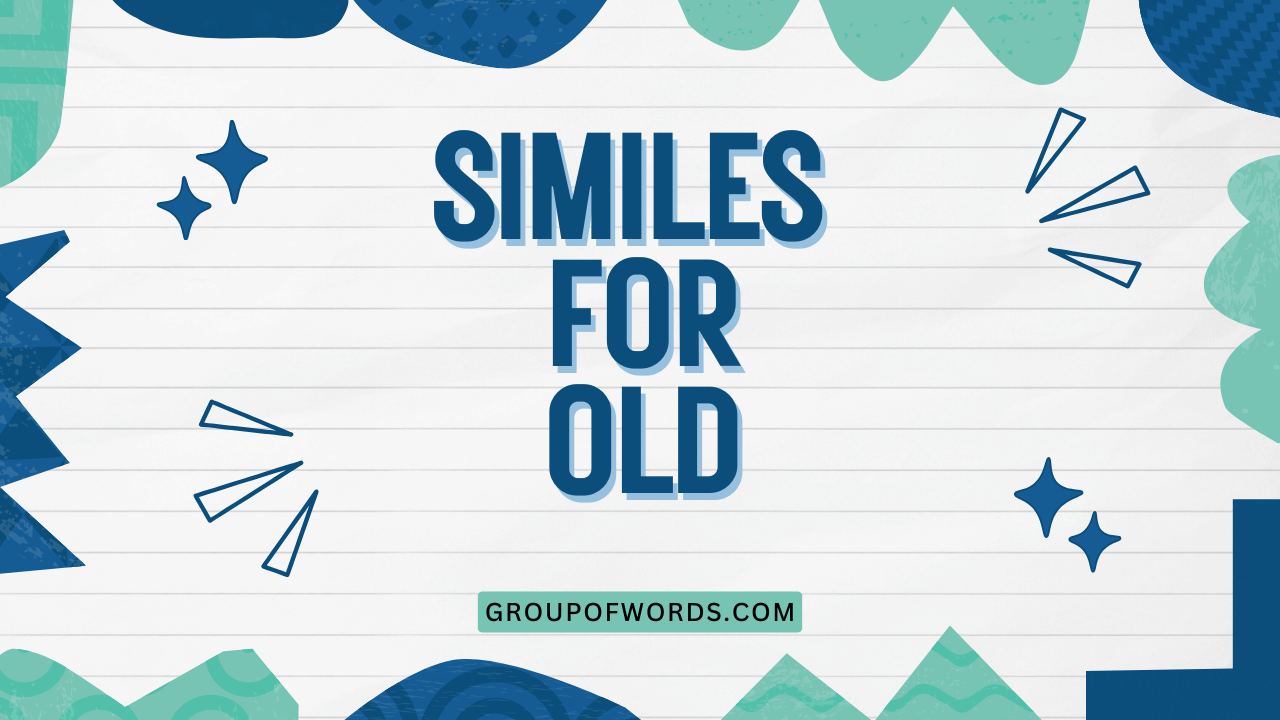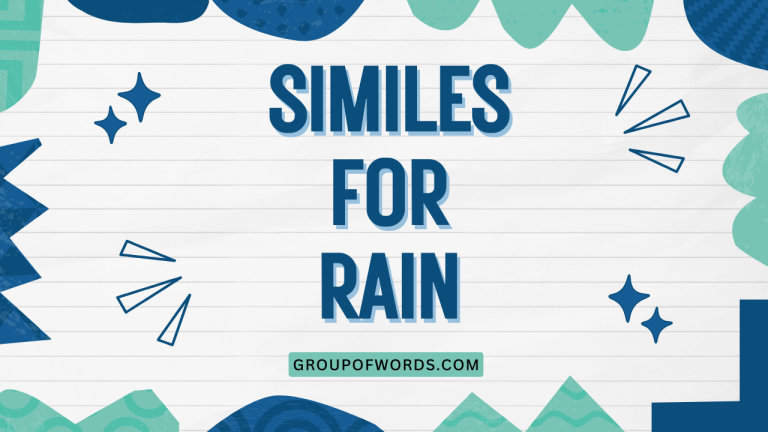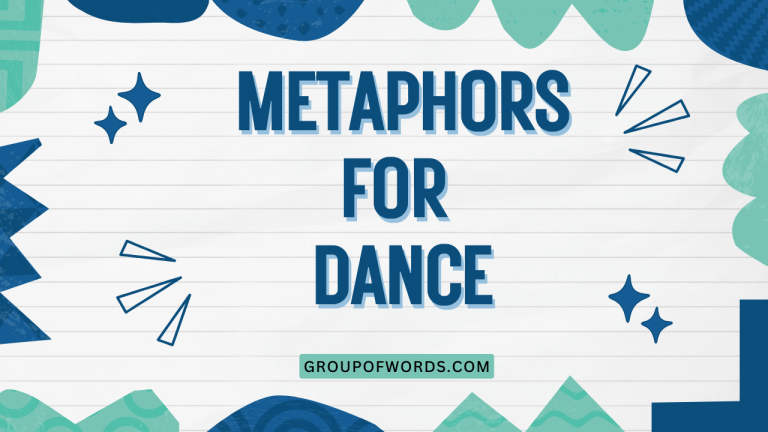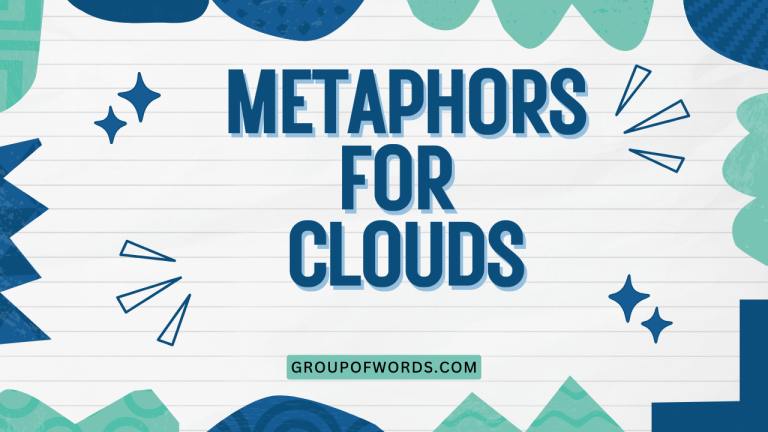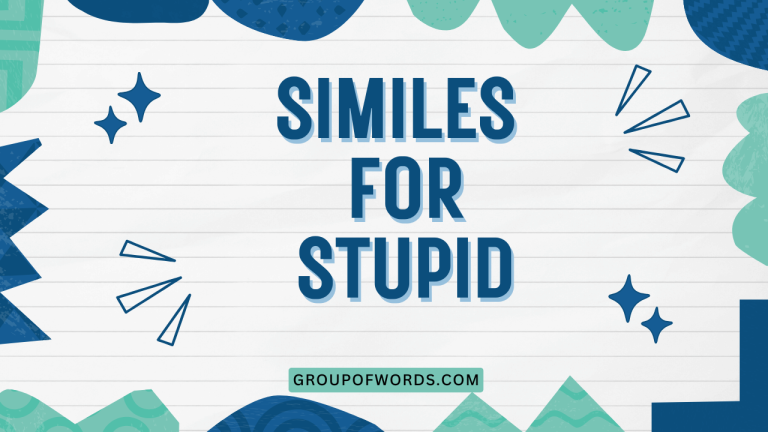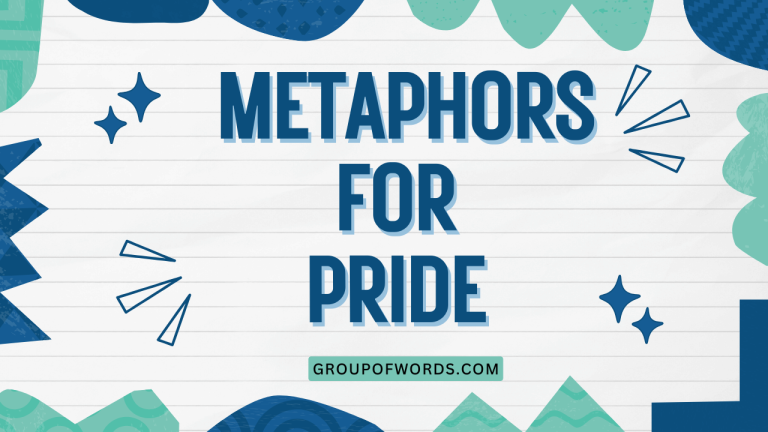Similes for Old: A Comprehensive Guide to Age-Related Comparisons
Similes are powerful tools in the English language, allowing us to draw vivid comparisons between different things. When it comes to describing old age, similes can be particularly effective in conveying the nuances of aging, from physical appearance to mental acuity and overall experience.
This article provides a comprehensive exploration of similes used to describe old age, offering definitions, structural breakdowns, examples, usage rules, common mistakes, practice exercises, and advanced topics. Whether you’re a student, writer, or simply someone interested in the intricacies of language, this guide will equip you with the knowledge and skills to use similes effectively when describing old age.
By understanding the art of crafting and interpreting these comparisons, you can enhance your writing, improve your comprehension, and appreciate the richness of the English language. This guide is designed for learners of all levels, from beginners to advanced speakers, providing a structured approach to mastering similes for describing old age.
Table of Contents
- Definition of Similes for Old
- Structural Breakdown
- Types of Similes for Old
- Examples of Similes for Old
- Usage Rules
- Common Mistakes
- Practice Exercises
- Advanced Topics
- FAQ
- Conclusion
Definition of Similes for Old
A simile is a figure of speech that compares two unlike things using the words “like” or “as.” It’s a way to make a description more vivid and relatable by drawing a parallel between the subject and something else. In the context of describing old age, similes are used to highlight various aspects of aging, such as physical characteristics, mental capabilities, and life experiences.
Similes provide a creative and often evocative way to portray the complexities of growing old.
The primary function of similes for old is to make the abstract concept of aging more concrete and understandable. By comparing an elderly person or their experiences to something familiar, we can create a clearer and more impactful image in the reader’s mind.
This can be particularly useful in literature, poetry, and even everyday conversation.
Similes can be used in various contexts, from formal writing to informal speech. They can be employed to evoke empathy, humor, or even a sense of melancholy.
The specific simile chosen will depend on the desired effect and the particular aspect of old age being described. For instance, “as wise as an owl” suggests wisdom and knowledge, while “like a withered leaf” evokes fragility and decline.
Structural Breakdown
The basic structure of a simile consists of three key elements: the subject being described (in this case, something related to old age), the comparison word (“like” or “as”), and the object or concept to which the subject is being compared. Understanding this structure is crucial for both creating and interpreting similes effectively.
The structure can be represented as follows:
Subject (Old Age) + Comparison Word (like/as) + Object/Concept
For example:
- Her skin (Subject) + was like (Comparison Word) + parchment (Object/Concept).
- His memory (Subject) + is as (Comparison Word) + fading photographs (Object/Concept).
The subject is the entity or aspect of old age being focused on, such as a person’s appearance, abilities, or experiences. The comparison word, “like” or “as,” establishes the link between the subject and the object/concept.
The object/concept is the thing to which the subject is being compared, providing a point of reference for understanding the simile.
The effectiveness of a simile depends on the relevance and impact of the comparison. A strong simile draws a clear and meaningful connection between the subject and the object/concept, creating a vivid and memorable image.
For instance, comparing an old person’s voice to “gravel” effectively conveys its rough and raspy quality.
Types of Similes for Old
Similes for old can be categorized based on the specific aspects of old age they describe. Understanding these categories can help you choose the most appropriate simile for a given situation and create more nuanced and effective descriptions.
Here are some common types of similes for old:
Physical Appearance
These similes focus on the physical characteristics of old age, such as wrinkles, hair color, and skin texture. They often evoke a sense of fragility or decline.
Mental Acuity
These similes describe the mental capabilities of elderly individuals, such as memory, cognitive function, and wisdom. They can highlight both the challenges and the strengths associated with aging.
Physical Ability
These similes address the physical limitations and abilities of older people, such as mobility, strength, and stamina. They often convey a sense of slowing down or physical decline.
Experience and Wisdom
These similes emphasize the wealth of knowledge and experience that comes with age. They often portray elderly individuals as wise, insightful, and knowledgeable.
Emotional State
These similes describe the emotional state of older people, such as loneliness, contentment, or resilience. They can provide insight into the emotional challenges and rewards of aging.
Examples of Similes for Old
This section provides a comprehensive collection of similes for old, organized by category. Each category includes a variety of examples to illustrate the different ways in which similes can be used to describe old age.
Physical Appearance
These similes focus on the visible signs of aging, such as wrinkles, gray hair, and changes in skin texture. The following table provides a wide range of examples.
The table below lists similes that vividly describe the changes in physical appearance associated with aging.
| Simile | Explanation |
|---|---|
| Her skin was like parchment. | Highlights the thinness and dryness of aged skin. |
| His hair was as white as snow. | Emphasizes the complete loss of pigment in hair. |
| Her wrinkles were like a roadmap of her life. | Suggests that wrinkles tell the story of a life lived. |
| His hands were like gnarled branches. | Conveys the twisted and weathered appearance of aged hands. |
| Her eyes were as faded as old photographs. | Highlights the loss of vibrancy in the eyes. |
| His face was like a dried apple. | Emphasizes the shrunken and wrinkled appearance of the face. |
| Her hair was like spun silver. | A more positive simile, highlighting the beauty of gray hair. |
| His skin was as delicate as tissue paper. | Emphasizes the fragility of aged skin. |
| Her bones were like brittle twigs. | Highlights the increased risk of fractures in old age. |
| His posture was like a question mark. | Conveys the stooped posture often associated with aging. |
| Her smile was like a cracked mirror. | Suggests a smile that is both present and marked by age. |
| His voice was like rusty hinges. | Describes a voice that is weak and creaky. |
| Her walk was as slow as molasses. | Emphasizes the reduced pace of movement in old age. |
| His frame was like a worn-out coat rack. | Conveys a sense of being burdened by age. |
| Her eyes were like cloudy marbles. | Highlights the loss of clarity in the eyes. |
| His beard was like a tangled bird’s nest. | Describes an unkempt and overgrown beard. |
| Her complexion was like aged ivory. | A more positive simile, highlighting the unique beauty of aged skin. |
| His gait was as unsteady as a newborn foal. | Emphasizes the lack of balance and coordination. |
| Her fingers were like knotted string. | Conveys the gnarled and twisted appearance of aged fingers. |
| His laugh was like a dry cough. | Describes a laugh that is weak and strained. |
| Her presence was like a faded photograph. | Highlights the diminishing physical presence. |
| His silhouette was like a bent tree. | Conveys the stooped and weathered appearance. |
| Her touch was as light as a feather. | Emphasizes the gentleness and fragility. |
Mental Acuity
These similes focus on the cognitive abilities of elderly individuals, such as memory, attention span, and problem-solving skills. They can highlight both the challenges and the strengths associated with aging minds.
The table below lists similes that describe the mental state of elderly individuals, focusing on memory and cognitive abilities.
| Simile | Explanation |
|---|---|
| His memory was like a sieve. | Highlights the difficulty in retaining information. |
| Her mind was as sharp as a tack. | Emphasizes the mental acuity and intelligence. |
| His thoughts were like scattered leaves. | Conveys a sense of confusion and disorganization. |
| Her wisdom was like an ancient library. | Suggests a vast store of knowledge and experience. |
| His focus was as fleeting as a butterfly. | Highlights the difficulty in maintaining attention. |
| Her mind was like a well-worn book. | Emphasizes the depth and richness of experience. |
| His memory was as unreliable as smoke. | Conveys the fleeting and insubstantial nature of memory. |
| Her intellect was like a polished gem. | Highlights the brilliance and clarity of her mind. |
| His thoughts were like a tangled web. | Conveys a sense of confusion and complexity. |
| Her understanding was as clear as crystal. | Emphasizes the clarity and precision of her thinking. |
| His memory was like a broken record. | Highlights the repetitive nature of some memories. |
| Her mind was like a steel trap. | Emphasizes the ability to retain and recall information. |
| His thoughts were as slow as a snail. | Conveys the slowness of cognitive processing. |
| Her wisdom was like a guiding star. | Suggests the ability to provide direction and insight. |
| His memory was as fragile as glass. | Highlights the vulnerability of memory to damage. |
| Her mind was like a fertile garden. | Emphasizes the creativity and productivity of her thinking. |
| His thoughts were like a rushing river. | Conveys a sense of rapid and uncontrolled thinking. |
| Her understanding was as deep as the ocean. | Emphasizes the profoundness of her knowledge. |
| His memory was like an old photograph album. | Suggests a collection of cherished but fading memories. |
| Her mind was like a complex puzzle. | Conveys the intricate and challenging nature of her thinking. |
| His thoughts were as elusive as dreams. | Highlights the difficulty in grasping and retaining thoughts. |
| Her wisdom was like a beacon in the night. | Suggests the ability to provide guidance and hope. |
| His memory was as selective as a curator. | Emphasizes the tendency to remember certain things while forgetting others. |
Physical Ability
These similes focus on the physical capabilities and limitations of elderly individuals, such as mobility, strength, and endurance. They often convey a sense of slowing down or physical decline.
The following table provides similes that describe the physical abilities of older individuals, highlighting both limitations and adaptations.
| Simile | Explanation |
|---|---|
| His movements were as slow as a turtle. | Emphasizes the reduced speed of movement. |
| Her strength was like a fading ember. | Highlights the diminishing physical power. |
| His stamina was as limited as a short fuse. | Conveys the reduced ability to endure physical exertion. |
| Her balance was like a tightrope walker’s. | Suggests a need for constant focus to maintain stability. |
| His steps were as hesitant as a child’s. | Emphasizes the uncertainty and caution in movement. |
| Her energy was like a flickering candle. | Highlights the intermittent and unreliable nature of energy. |
| His agility was as diminished as an old dancer’s. | Conveys the loss of grace and coordination. |
| Her endurance was like a marathon runner’s, but much shorter. | Highlights the reduced capacity for sustained effort. |
| His reflexes were as slow as molasses in winter. | Emphasizes the delayed response to stimuli. |
| Her grip was like a gentle vise. | Suggests a firm but not overpowering hold. |
| His pace was as measured as a ticking clock. | Emphasizes the slow and deliberate nature of movement. |
| Her flexibility was like a rusty hinge. | Conveys the stiffness and reduced range of motion. |
| His gait was as shuffling as a deck of cards. | Emphasizes the uneven and unsteady nature of walking. |
| Her movements were like a slow-motion film. | Highlights the reduced speed and fluidity of movement. |
| His strength was as brittle as dry leaves. | Conveys the ease with which physical capacity can be compromised. |
| Her stamina was like a battery running on low. | Emphasizes the reduced capacity for sustained activity. |
| His agility was as stiff as a board. | Conveys the lack of flexibility and coordination. |
| Her endurance was like a well-worn path, familiar but limited. | Highlights the capacity for routine but not for new challenges. |
| His reflexes were as dulled as an old knife. | Emphasizes the reduced sharpness and responsiveness. |
| Her grip was as light as a butterfly’s wing. | Conveys the gentleness and lack of force. |
Experience and Wisdom
These similes focus on the accumulated knowledge and insights that come with age. They often portray elderly individuals as wise, insightful, and knowledgeable figures.
The table below lists similes emphasizing the rich experiences and wisdom gained through years of life.
| Simile | Explanation |
|---|---|
| Her wisdom was like a deep well. | Suggests a vast and inexhaustible source of knowledge. |
| His experience was as vast as the ocean. | Emphasizes the breadth and depth of accumulated knowledge. |
| Her insights were like pearls of wisdom. | Highlights the value and beauty of her understanding. |
| His knowledge was as solid as a rock. | Conveys the reliability and stability of his understanding. |
| Her advice was like a compass, guiding others. | Suggests the ability to provide direction and clarity. |
| His stories were like ancient tapestries. | Emphasizes the richness and complexity of his experiences. |
| Her perspective was as broad as the horizon. | Conveys a comprehensive and far-reaching understanding. |
| His understanding was like a finely tuned instrument. | Highlights the precision and accuracy of his thinking. |
| Her guidance was like a lighthouse in a storm. | Suggests the ability to provide safety and direction in difficult times. |
| His memories were like a treasure trove. | Emphasizes the value and significance of his past experiences. |
| Her wisdom was as comforting as a warm fire. | Conveys the sense of security and reassurance she provides. |
| His experience was like a well-worn map. | Highlights his familiarity with the terrain of life. |
| Her insights were as sharp as a surgeon’s scalpel. | Emphasizes the precision and accuracy of her understanding. |
| His knowledge was like an encyclopedia. | Suggests a comprehensive and detailed understanding of the world. |
| Her advice was as valuable as gold. | Emphasizes the importance and worth of her guidance. |
| His stories were like a history book come to life. | Conveys the richness and relevance of his past experiences. |
| Her perspective was as clear as a mountain spring. | Highlights the purity and clarity of her understanding. |
| His understanding was like a finely crafted clock. | Emphasizes the precision and accuracy of his thinking. |
| Her guidance was like a gentle hand on the back. | Suggests a supportive and encouraging presence. |
| His memories were like a collection of vintage wines. | Emphasizes the value and appreciation of his past experiences. |
Emotional State
These similes focus on the emotional experiences of elderly individuals, such as loneliness, contentment, resilience, and acceptance. They offer insight into the emotional landscape of aging.
The table below provides similes that describe the emotional experiences of elderly individuals, including feelings of loneliness, contentment, and resilience.
| Simile | Explanation |
|---|---|
| Her loneliness was like a heavy cloak. | Emphasizes the burden and isolation of being alone. |
| His contentment was as peaceful as a still lake. | Conveys a sense of serenity and inner peace. |
| Her resilience was like a sturdy oak tree. | Highlights the ability to withstand challenges and adversity. |
| His acceptance was as gentle as a summer breeze. | Conveys a sense of calm and peaceful resignation. |
| Her joy was like a rare flower blooming in winter. | Emphasizes the unexpected beauty of happiness in old age. |
| His sadness was like a lingering shadow. | Conveys the persistent presence of grief and loss. |
| Her hope was as bright as a distant star. | Highlights the enduring belief in a positive future. |
| His fear was like a cold hand on his heart. | Conveys the paralyzing effect of anxiety and dread. |
| Her love was as deep as the ocean. | Emphasizes the profound and enduring nature of her affection. |
| His memories were like a bittersweet symphony. | Conveys the mixture of joy and sadness associated with the past. |
| Her spirit was as indomitable as a mountain. | Highlights the unyielding strength and determination. |
| His patience was like a bottomless well. | Conveys the endless capacity for tolerance and understanding. |
| Her gratitude was as radiant as the sun. | Emphasizes the warmth and sincerity of her appreciation. |
| His longing was like a constant ache. | Conveys the persistent desire for something lost or unattainable. |
| Her peace was as profound as a silent meditation. | Highlights the sense of inner calm and tranquility. |
| His regret was like a heavy chain. | Conveys the burden and restriction of past mistakes. |
| Her courage was as unwavering as a lighthouse beam. | Emphasizes the steadfastness and determination in the face of adversity. |
| His nostalgia was like a warm blanket on a cold day. | Conveys the comforting and soothing nature of fond memories. |
| Her forgiveness was as complete as a fresh start. | Highlights the ability to let go of past hurts and resentments. |
| His wisdom was as comforting as a familiar lullaby. | Conveys the sense of security and reassurance he provides. |
Usage Rules
Using similes effectively requires attention to several key rules. These rules ensure that your similes are clear, relevant, and impactful.
- Clarity: The comparison should be easily understood. Avoid obscure or overly complex references.
- Relevance: The object/concept being compared should have a clear and meaningful connection to the subject (old age).
- Originality: While common similes can be effective, strive to create original comparisons that offer a fresh perspective.
- Context: Consider the context in which the simile is being used. The tone and purpose of the writing should influence the choice of simile.
- Avoid Clichés: Steer clear of overused similes that have lost their impact.
For example, instead of saying “as old as the hills” (a cliché), you could say “His memories were as old as the ancient oak in the town square,” which is more specific and evocative.
Common Mistakes
Several common mistakes can undermine the effectiveness of similes. Being aware of these pitfalls can help you avoid them.
Here’s a table highlighting some common mistakes in using similes, along with corrections.
| Mistake | Incorrect Example | Correct Example | Explanation |
|---|---|---|---|
| Using clichés | He was as old as time. | He was as old as the ancient stones of the castle. | Avoid overused and unoriginal comparisons. |
| Irrelevant comparisons | She was as old as a car. | She was as old as the antique clock in the hall. | Ensure the comparison is relevant to the subject. |
| Confusing similes with metaphors | He was an old tree. | He was like an old tree, weathered and strong. | Similes use “like” or “as”; metaphors state a direct equivalence. |
| Overusing similes | His hands were like gnarled branches, his eyes like faded photographs, and his voice like rusty hinges. | His hands were like gnarled branches, telling a story of hard work. | Use similes sparingly to avoid overwhelming the reader. |
| Inconsistent tone | He was as old as the dinosaurs, but as energetic as a teenager. | He was as old as the dinosaurs, but his spirit remained youthful. | Maintain a consistent tone and avoid jarring contrasts. |
Practice Exercises
These exercises will help you practice creating and identifying effective similes for describing old age. Each exercise includes a series of questions with answers provided at the end.
Exercise 1: Complete the Simile
Complete each simile with an appropriate comparison.
| Question | Answer |
|---|---|
| 1. Her hair was as white as _____. | snow |
| 2. His memory was like a _____. | sieve |
| 3. Her wisdom was like a _____. | deep well |
| 4. His steps were as slow as _____. | a turtle |
| 5. Her skin was like _____. | parchment |
| 6. His thoughts were like _____. | scattered leaves |
| 7. Her eyes were as faded as _____. | old photographs |
| 8. His laughter was like _____. | a dry cough |
| 9. Her presence was like _____. | a faded photograph |
| 10. His experience was as vast as _____. | the ocean |
Exercise 2: Identify the Simile
Identify the simile in each sentence.
| Question | Answer |
|---|---|
| 1. His voice, like gravel, rasped with age. | like gravel |
| 2. Her mind was a steel trap, sharp and unforgiving. | (None – this is a metaphor) |
| 3. His steps were as hesitant as a child’s first steps. | as hesitant as a child’s first steps |
| 4. Her wrinkles told a story of a life well-lived. | (None – this is personification) |
| 5. His memory was as unreliable as smoke in the wind. | as unreliable as smoke in the wind |
| 6. Her wisdom guided us like a beacon in the night. | like a beacon in the night |
| 7. His strength, though diminished, was a testament to his resilience. | (None – this is a statement of fact) |
| 8. Her love was as deep as the ocean, boundless and enduring. | as deep as the ocean |
| 9. His laughter echoed through the halls, a joyful sound. | (None – this is descriptive language) |
| 10. Her patience was like a bottomless well, never running dry. | like a bottomless well |
Exercise 3: Create Your Own Simile
Create a simile for each of the following prompts.
| Prompt | Example Answer |
|---|---|
| 1. Describe an old person’s hands. | His hands were like weathered maps, each line telling a story. |
| 2. Describe an old person’s eyes. | Her eyes were as deep as ancient pools, reflecting years of memories. |
| 3. Describe an old person’s voice. | His voice was like a cello, rich and resonant with age. |
| 4. Describe an old person’s walk. | Her walk was as graceful as a willow in the wind, swaying gently with each step. |
| 5. Describe an old person’s smile. | His smile was like a sunrise, warm and hopeful even after a long night. |
| 6. Describe an old person’s wisdom. | Her wisdom was like a library, filled with countless stories and lessons. |
| 7. Describe an old person’s memory. | His memory was like a garden, some flowers blooming brightly, others faded and forgotten. |
| 8. Describe an old person’s strength. | Her strength was like a mountain, unyielding and steadfast in the face of storms. |
| 9. Describe an old person’s spirit. | His spirit was like a flame, flickering but never extinguished. |
| 10. Describe an old person’s love. | Her love was as constant as the stars, always present even when unseen. |
Advanced Topics
For advanced learners, exploring more complex aspects of similes can enhance their understanding and usage. This includes examining the use of extended similes, exploring the cultural context of similes, and analyzing the use of similes in literature.
Extended Similes: An extended simile is a simile that is developed over several lines or even paragraphs. It allows for a more detailed and nuanced comparison.
Cultural Context: The effectiveness of a simile can depend on the cultural background of the audience. A simile that resonates with one culture may not be meaningful to another.
Similes in Literature: Analyzing how similes are used in literature can provide valuable insights into their power and potential. Authors often use similes to create vivid imagery, develop character, and convey themes.
FAQ
This section addresses frequently asked questions about similes for old, providing clear and concise answers.
- What is the difference between a simile and a metaphor?
- Why are similes useful in describing old age?
- How can I avoid using clichés when creating similes?
- What makes a simile effective?
- Can similes be used in formal writing?
- How do I choose the right simile for a particular context?
- Are there any cultural considerations when using similes?
- How can I improve my ability to create effective similes?
A simile compares two things using “like” or “as,” while a metaphor directly equates two things without using those words. For example, “His memory was like a sieve” (simile) vs.
“His memory was a sieve” (metaphor).
Similes help make abstract concepts of aging more concrete and relatable by drawing comparisons to familiar things. They can evoke empathy, humor, or a sense of melancholy, enriching the description.
Strive for originality by thinking of specific and unique comparisons. Instead of “as old as time,” try “as old as the ancient stones of the castle.”
An effective simile is clear, relevant, and original. The comparison should be easily understood and have a meaningful connection to the subject being described.
Yes, similes can be used in formal writing, but they should be used judiciously and with careful consideration of the tone and purpose of the writing.
Consider the aspect of old age you want to highlight (physical appearance, mental acuity, etc.) and choose a comparison that effectively conveys that aspect. Also, consider the overall tone and purpose of your writing.
Yes, the effectiveness of a simile can depend on the cultural background of the audience. A simile that resonates with one culture may not be meaningful to another.
Be mindful of your audience and choose comparisons that are likely to be understood and appreciated.
Practice regularly, read widely, and pay attention to how other writers use similes. Also, try brainstorming different comparisons for a given subject and evaluating their effectiveness.
Conclusion
Mastering the art of using similes to describe old age can significantly enhance your writing and communication skills. By understanding the structure, types, and usage rules of similes, you can create vivid and impactful descriptions that resonate with your audience.
Remember to avoid common mistakes, practice regularly, and consider the context and cultural background of your audience. The ability to craft effective similes is a valuable tool for anyone seeking to express the complexities and nuances of aging.
Through careful practice and attention to detail, you can develop a keen eye for creating similes that are both original and meaningful. Embrace the challenge of finding new and creative ways to compare the experiences of old age to the world around us, and you will find yourself with a richer and more expressive vocabulary.
Keep exploring, keep practicing, and let your creativity guide you on this journey of linguistic discovery.
